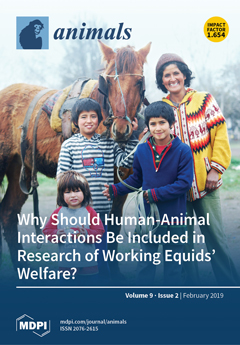Previous studies have strongly recommended that KISS-1 metastasis suppressor (
KISS1) plays an essential gatekeeper of the initiation of reproductive maturation in mammals. However,
KISS1 has been recently reported to highly express in ovarian granulosa cells (GCs). But the biological functionalities of
[...] Read more.
Previous studies have strongly recommended that KISS-1 metastasis suppressor (
KISS1) plays an essential gatekeeper of the initiation of reproductive maturation in mammals. However,
KISS1 has been recently reported to highly express in ovarian granulosa cells (GCs). But the biological functionalities of
KISS1 on cell apoptosis, cell cycle, and synthesis of estradiol-17β (E2) have not been explored in GCs. In this study, using porcine GCs as a cellular model, the overexpression plasmid of
KISS1 was built to explore the biological effects of
KISS1 on the PI3K signaling pathway, estrogen signaling pathway, cell apoptosis, cell cycle, and E2 secretion. We found that mRNA of
KISS1 highly expressed in the ovary and significantly increased from immature to mature follicles in gilts. Overexpression of
KISS1 could significantly increase the mRNA expression of
PIK3CG, PIK3C1, and
PDK1, and significantly decreased the mRNA levels of
FOXO3,
TSC2, and
BAD of PI3K signaling pathway. Furthermore, results of the flow cytometry showed that overexpression of
KISS1 significantly inhibited the apoptosis of GCs and decreased the percentage of GCs at G0/G1 phase of the cell cycle. Additionally, overexpression of
KISS1 could increase the mRNA levels of
Star,
CYP17,
3B-HSD,
17B-HSD of estrogen synthesis signaling pathway, significantly increase the concentration of E2 in the supernatant of the cultured GCs, and up-regulate the mRNA expression levels of
ESR1 and
ESR2. These results suggested that
KISS1 might suppress cell apoptosis through activating the PI3K signaling pathway and stimulate synthesis of E2 via boosting the estrogen synthesis signaling pathway. This study would be of great interests for exploring the biological functionalities of
KISS1 in the folliculogenesis and sex steroid production of the ovaries in mammals.
Full article






